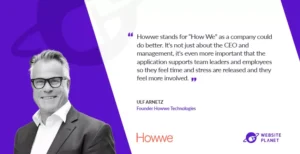Welcome back to our blog series on “Strategy Acceleration,” inspired by the book written by Ulf Arnetz and Catrin Brodin. In this series, we explore the key differences between traditional strategy execution and strategy acceleration. Today, we’ll focus on the communicational aspects and the importance of effective follow-up in these two approaches.
Traditional strategy execution – communication as an afterthought
In traditional strategy execution, communication often takes a back seat. Once the strategy is formulated and communicated to top management, there is limited effort to ensure that the strategy message reaches all levels of the organization. As a result, employees may have a vague understanding of the strategy, or worse, they may not even be aware of it. This lack of clear communication leads to misalignment and a lack of shared vision.
Lack of follow-up and accountability
Another common issue in traditional strategy execution is the lack of follow-up and accountability. After the initial communication of the strategy, there is often little effort to track progress or evaluate the effectiveness of the execution. As a result, employees may lose motivation, and strategic initiatives may not receive the necessary support or resources to succeed. The lack of accountability also makes it difficult to identify and address challenges or roadblocks along the way.
Strategy acceleration – the power of effective communication
Strategy acceleration recognizes the critical role of communication in successful strategy execution. It emphasizes the need for clear, consistent, and ongoing communication at all levels of the organization. Effective communication ensures that every employee understands the strategy, their role in its execution, and how their efforts contribute to the overall goals. This shared understanding fosters alignment, engagement, and a sense of ownership among employees.
Communicating with purpose
In strategy acceleration, communication is not an afterthought but an integral part of the execution process. It starts with a clear and concise strategy message that is communicated to the entire organization. This message outlines the strategic objectives, the rationale behind them, and the expected outcomes. Additionally, communication is ongoing, with regular updates and progress reports that keep employees informed and engaged.
Two-way communication and feedback
Strategy acceleration encourages two-way communication and feedback channels. It creates opportunities for employees to ask questions, provide input, and share their thoughts and ideas. This open communication fosters a culture of collaboration and innovation, allowing the organization to benefit from the collective intelligence of its employees. Managers play a crucial role in facilitating this two-way communication and ensuring that feedback is valued and acted upon.
Follow-up and accountability for results
A fundamental aspect of strategy acceleration is the establishment of a robust follow-up and accountability system. This involves tracking progress, evaluating performance, and addressing any deviations or challenges promptly. Regular check-ins, performance reviews, and progress updates ensure that the strategy stays on track and adjustments can be made if necessary. Accountability is key at all levels of the organization, from top management to individual employees, fostering a culture of ownership and responsibility for results.
Celebrating milestones and successes
In strategy acceleration, celebrating milestones and successes along the way is essential. It reinforces the progress made, boosts morale, and keeps employees motivated and engaged. Recognizing and rewarding individuals and teams for their contributions to the strategy execution helps create a positive and supportive work environment.
The role of managers in communication and follow-up
Managers play a crucial role in effective communication and follow-up. They are responsible for cascading the strategy message to their teams, ensuring clarity and understanding. They also provide ongoing guidance, support, and feedback to employees, helping them align their work with the strategic objectives. Managers act as role models for effective communication and accountability, setting the tone for the entire organization.
In the next blog post, we’ll delve deeper into the implementation aspects of strategy acceleration and explore how organizations can overcome resistance to change and ensure widespread adoption of the new approach.
What are you waiting for?
Howwe is the Solution for Growth.
With our method and software, we simplify the execution of your strategy.





